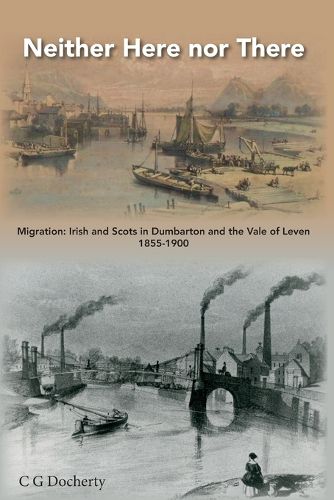Readings Newsletter
Become a Readings Member to make your shopping experience even easier.
Sign in or sign up for free!
You’re not far away from qualifying for FREE standard shipping within Australia
You’ve qualified for FREE standard shipping within Australia
The cart is loading…






This title is printed to order. This book may have been self-published. If so, we cannot guarantee the quality of the content. In the main most books will have gone through the editing process however some may not. We therefore suggest that you be aware of this before ordering this book. If in doubt check either the author or publisher’s details as we are unable to accept any returns unless they are faulty. Please contact us if you have any questions.
The settlements of Dumbarton and the Vale of Leven are close neighbours and yet their histories are very different.
Dumbarton, a Royal Burgh since the thirteenth century and the county town of Dunbartonshire was, by the 1840s, in a poor state. Its famous Glassworks had been closed for some years and an emerging shipbuilding industry had yet to make a significant impact.
In contrast, the bustling villages of the Vale were the home to a thriving cloth bleaching, printing and dyeing industry. Works were located along the River Leven, which provided the constant supply of fresh water essential to their success. To attract workers to this rural area, settlements had to be built on 'greenfield' sites to accommodate them.
By the mid-1850s, shipbuilding was transforming Dumbarton, and that too required migrant labour. People arrived from all over Scotland and from Ireland, to work in the yards and foundries. Meantime, migrants continued to arrive in the Vale.
This book is primarily about these incomers: Where had they come from?
Where did they live?
How did they make a living?
What were living and working conditions like?
How did their presence transform the settlements they lived in?
How did this compare to what was happening elsewhere in Scotland?
$9.00 standard shipping within Australia
FREE standard shipping within Australia for orders over $100.00
Express & International shipping calculated at checkout
This title is printed to order. This book may have been self-published. If so, we cannot guarantee the quality of the content. In the main most books will have gone through the editing process however some may not. We therefore suggest that you be aware of this before ordering this book. If in doubt check either the author or publisher’s details as we are unable to accept any returns unless they are faulty. Please contact us if you have any questions.
The settlements of Dumbarton and the Vale of Leven are close neighbours and yet their histories are very different.
Dumbarton, a Royal Burgh since the thirteenth century and the county town of Dunbartonshire was, by the 1840s, in a poor state. Its famous Glassworks had been closed for some years and an emerging shipbuilding industry had yet to make a significant impact.
In contrast, the bustling villages of the Vale were the home to a thriving cloth bleaching, printing and dyeing industry. Works were located along the River Leven, which provided the constant supply of fresh water essential to their success. To attract workers to this rural area, settlements had to be built on 'greenfield' sites to accommodate them.
By the mid-1850s, shipbuilding was transforming Dumbarton, and that too required migrant labour. People arrived from all over Scotland and from Ireland, to work in the yards and foundries. Meantime, migrants continued to arrive in the Vale.
This book is primarily about these incomers: Where had they come from?
Where did they live?
How did they make a living?
What were living and working conditions like?
How did their presence transform the settlements they lived in?
How did this compare to what was happening elsewhere in Scotland?